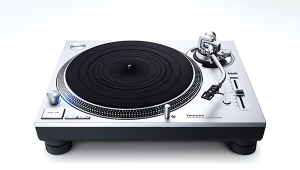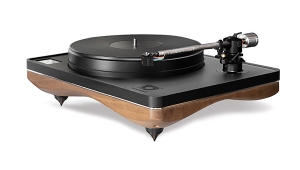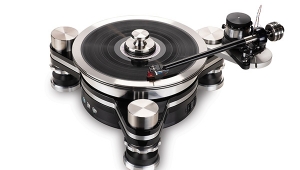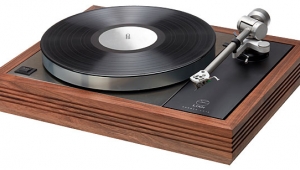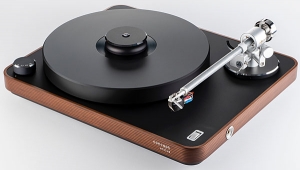| Columns Retired Columns & Blogs |
Versa Dynamics 2.0 LP player Page 5
Bass performance from discs, too, now sets a new standard. The Versa Dynamics, in my system, produced the smoothest, deepest, tightest low end I have ever heard from disc! Bass performance is almost exactly like that from Compact Disc, which is to say it is probably about as natural as it is possible to get. It is now clear that the WTA, which has been accused of thinning deep bass, instead slightly exaggerates the midbass. To the ear, the midbass exaggeration tends to obscure what is below.
In short, this player is giving me by far the best sound from analog discs that I have ever had, and has forced me to revise my feelings about CD relative to LP reproduction. I recently became aware that, during the three weeks I have been using this player, I have not played a single CD. Whether this is because I now prefer LP sound or is simply because my entire LP collection (which contains a lot of unsurpassed performances that may never be on CD) has suddenly been revitalized, is something I'm not prepared to declare because I haven't made up my own mind yet. However, I will admit that I cannot recall when I have derived so much pleasure from so much of my analog disc collection.
Is this, then, the best 'table/arm unit in the world? For my money, yes. I haven't heard the $22,350 Goldmund Reference, and obviously can make no final pronouncements, but the Goldmund does have some design features which are, theoretically at least, inferior to the Versa Dynamics'. The Reference could hardly have a better disc-damping system than this, its incrementing carriage feed (constant-speed, and actuated by a position sensor) will inevitably be very slightly off tangency much of the time (whether or not it is audible), and its much longer tonearm (7" from stylus to pivot, as opposed to the Versa's 3") is inevitably more susceptible to longitudinal resonances in the critical midrange region.
The only real problems I foresee with the Versa Dynamics 2.0 would involve isolation of its pump module from the listening environment (and its surrounding area). The frequencies at which the pump produces most of its noise and vibration are low enough that they are unlikely to cause trouble if the pump is on a concrete floor or a low-resonance suspension. But using the system in a frame house could cause real headaches—literally, because floor joists are very efficient transmitters of low-frequency vibrations. Just how much of a hassle this turns out to be will depend on whether or not the structural resonances in a given venue happen to fall on the 40 or 20Hz frequencies. But even if they don't, it would probably only make a difference between the LF noise being clearly audible throughout the house or being positively obnoxious.
(Remember that, while 20Hz is at the lower limit of human hearing, it is by no means at the limit of perception, as can be corroborated by anyone who has ever experienced a large pipe organ sounding off at 16Hz. 20Hz can be definitely felt, as a pulsating pressure on the body, and it has been demonstrated that more than a few minutes of such pulsing can cause a headache.)
The optional noise-reduction enclosure has relatively little effect on floor-borne vibration. It would seem, then, that if there isn't a convenient concrete floor on which to place the pump, the pump assembly will need better supporting isolation than it now has. Suspending it from the ceiling on springs is one possible solution. A better one would be to provide adequate isolation through the unit's feet, as by the use of such compression springs as support the turntable suspension.
I would have liked nothing more than to assure you that this $8000 system is a waste of money unless you're willing to go for broke to get a tiny improvement in sound. Unfortunately, that's not the case. The improvements it effects in LP reproduction are real, significant, and—as far as I'm concerned—well worth the cost. Very highly recommended, with fireworks and fanfares.
- Log in or register to post comments
